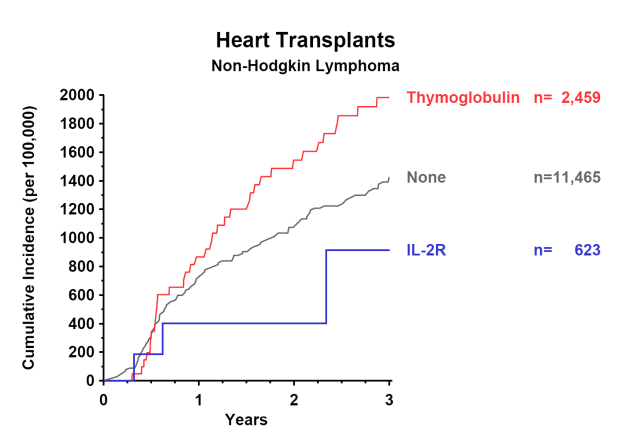
Figure 1
August 1, 2006
The May 2006 CTS newsletter prompted several study participants to inquire whether the differential lymphoma rates reported for kidney transplant recipients also applied to recipients of non-renal transplants. We have analyzed the available data and, although the patient numbers are smaller and therefore not as powerful statistically, the results by and large are similar to those reported for kidney transplant. The incidence of non-Hodgkin lymphoma in heart transplant recipients and lung transplant recipients is shown in Figures 1 and 2, respectively.

Figure 1
One must consider that the numbers of patients treated with IL-2 receptor antibodies (IL-2R) are relatively small. Nevertheless, it is reassuring that in both analyses the lymphoma rate in patients treated with IL-2R does not exceed that in patients not receiving any antibody induction. Further supporting these results are the data obtained in liver transplant recipients illustrated in Figure 3. A curve for thymoglobulin is not shown in the graph because only 76 liver patients in this analysis were treated with thymoglobulin, a number too small for meaningful analysis of the lymphoma rate.
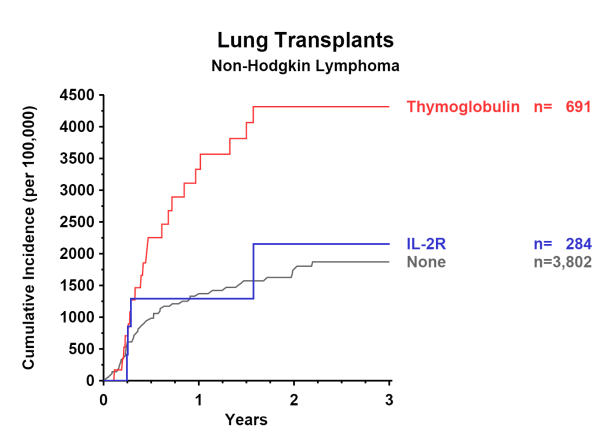
Figure 2
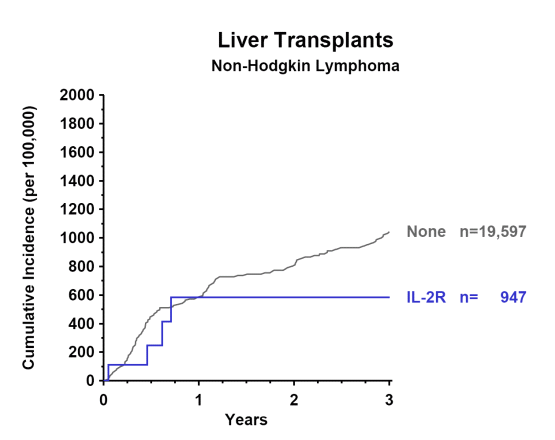
Figure 3
During the last 15 years, the total number of transplants reported each year to CTS has been approximately 20,000 (Figure 4). Two registries are behind schedule with their reporting; when these delayed submissions are received the number for 2004 will increase. The consistency in yearly volume can be interpreted as an indicator of the steady level of interest that study participants have in the collaborative study.
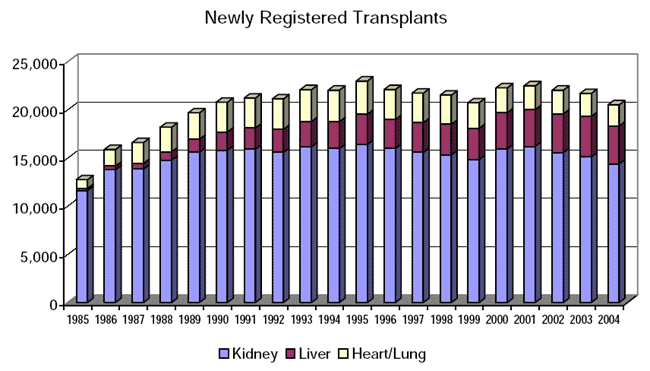
Figure 4
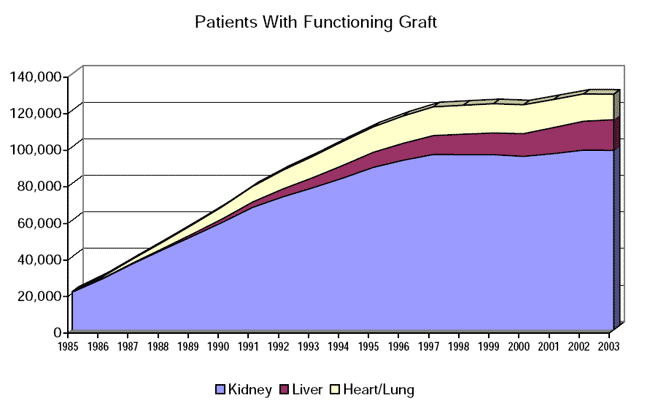
Figure 5
Figure 5 illustrates the evolution of the number of patients registered with functioning grafts. It appears that we are approaching a state of equilibrium in which the number of newly registered transplants approximately equals the number of transplants that fail each year -- many after years of successful function.
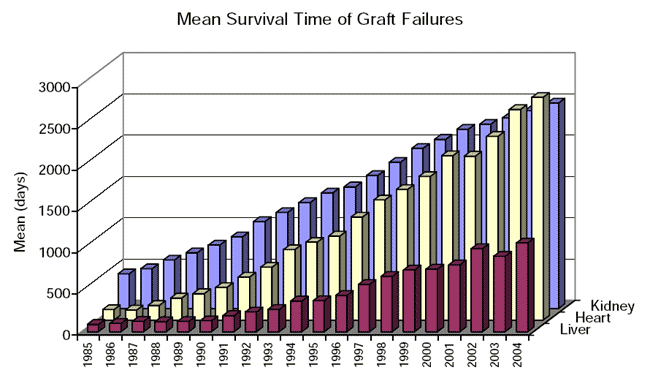
Figure 6
The mean duration of organ function for those transplants that have failed shows an impressive increase (Figure 6). Please be aware that this graph shows the duration of graft survival for patients with graft failure, and thus is very different from a Kaplan-Meier survival curve. The lower survival times for failing liver grafts are a reflection of the higher early graft failure rate with this type of transplant. The long-term Kaplan-Meier graft survival rate for liver transplants equals that of kidney and heart transplants due to a lower rate of late rejections and chronic graft failures (see CTS website www.ctstransplant.org).
Several centers have responded positively to my appeal in the last newsletter for participation in the CTS Serum Project. Please consider the possibility of collecting patient sera for the November deadline. This project addresses a research topic that, because of its important implications for clinical transplantation, is a top priority item. We are aiming at clarifying the current uncertainties associated with the subject of post-transplant de novo antibodies. You can make an important contribution to a complex project that requires multi-center collaboration in order to yield conclusive results. Please join us. Your contribution really counts! For details, please consult the CTS website under "Special Studies".
Thank you for your support of the international collaborative study.
Sincerely yours,